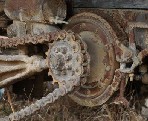|
It is not often
that you see a car such as the 1903 Oldsmobile that recently graced the workshop, let alone be invited by the owner to try
and solve a long running riddle.
So it was that
this particular Curved Dash Olds (CDO) came into the Rustytrucks workshop with a simple request from its owner – please
get it to run! It would appear that although it had been a runner some years
ago (and had completed a number of Veteran Car Club London to Brighton runs) it had, since then steadfastly refused to start
and run. The owner had sent it to a number of places for them to try their hand,
but each time the car came back in the same state that it went; a non-runner.
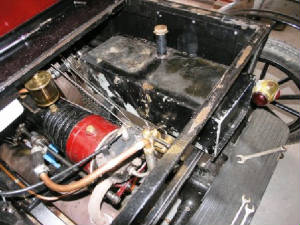
|
| The Oldsmobile Engine Room |
A visit to the
owners premises, a conversation and an initial inspection of the car suggested that at the very least we should get it into
the workshop and have a really close look. The owner suspected that the valve
and ignition timing were way out, and that did seem to be plausible as there appeared to be plenty of opportunity in the camshaft
and ignition departments to go wrong. The car was carefully winched up onto the
trailer and moved to the Rustytrucks nerve centre where, armed with an excellent manual written by an American CDO owner and
restorer investigations commenced.
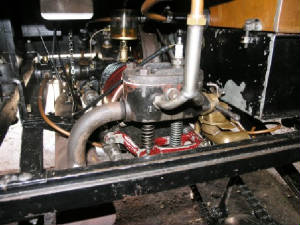
|
| The overhead valve and cam arrangement |
On the face
of it the engine room of even this 1903 machine would be recognisable to modern mechanics:
a single cylinder petrol engine with overhead valves, an overhead cam a modern looking spark plug and a carburettor,
and albeit that the ignition “spark” is provided by a trembler coil (giving a lengthy buzz of spark rather than
a single coil type flash) it all looks very straightforward. But this was 1903
and a lot of refinement of the basics has gone on since then so a healthy dose of “take nothing for granted” was
the order of the day.
Although all
seemed in order it simply would not run, and so it was back to basics. On the
face of it all seemed to be within the limits and tolerances specified and yet there was no joy whatsoever (that said cranking
over the 100lb flywheel and bulky old single cylinder was an excellent workout). Looking
again at the limits and tolerances revealed an interesting trend though, and that was that everything was at the “late”
end of the scale (in timing terms). The spark for instance was within the limits
set down in the book, but it was at the right hand end of it and, more to the point, there was no further room for adjustment. In fact it was all a little late, and the conclusion was that each element on its
own would not cause the engine not to run, but taken together they would (and did)
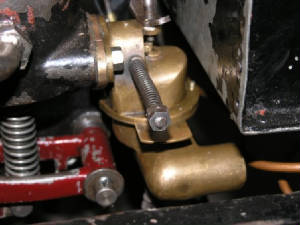
|
| The non-float chamber carb |
So the whole timing arrangement
was stripped down and reset, effectively advancing everything by the equivalent of a full cog on the camshaft drive assembly. After reassembling everything, and with a little tidying up of the fuel and carb arrangements,
the moment of truth arrived and lo and behold, it ran. Or at least it ran for
a few tens of seconds. But at least it ran, and that was the first time for a
long time that it had done so.
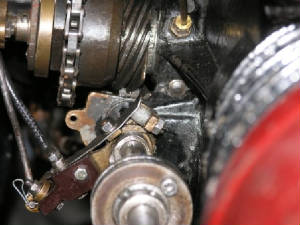
|
| Camshaft after dismantling and re-setting. Note the "wiper" for the trembler coil. |
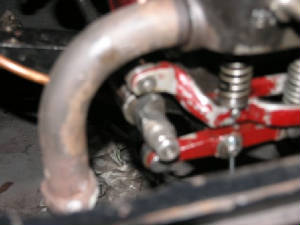
|
| The valve timing adjustment acheived by moving the cams on the shaft. |
After a while,
though, it became obvious that there was more wrong than even the complexity of the timing arrangements. The problem manifested itself as the engine simply dying away which suggested either a fuel or failing
ignition problem, but extensive investigation revealed both to be OK. It was
noted however that the “dying” was in fact a severe stiffening up of the engine – it was not seizing but
it was certainly getting very hard to turn over, then mysteriously, it would loosen up again.
Either something was jamming or else expanding and seizing. The latter
seemed to be most likely as it occurred as the engine warmed, and the fact that a new piston and liner had been fitted suggested
the problem may be there, perhaps materials and tolerances were too “modern” for such an old engine, with the
piston perhaps warming and nipping up quicker than the surrounding cylinder.
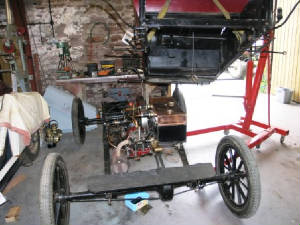
|
| Stripping the car down to get at the engine. |
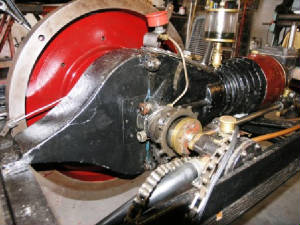
|
| The engine revealed. |
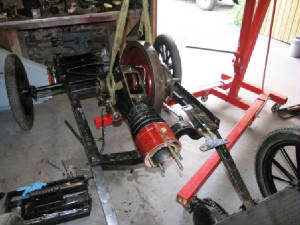
|
| Not many bits left to remove.... |
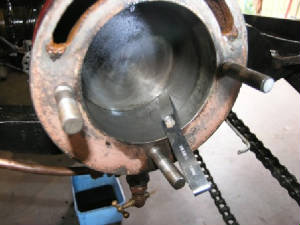
|
| Checking the piston clearance - it is OK |
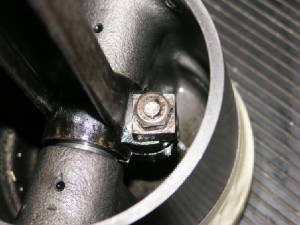
|
| But this wrist pin siezes solid as soon as the engine gets warm - and stops it in its tracks! |
Stripping down
meant virtually dismantling the whole vehicle, a surprisingly complex and lengthy process; this was clearly not a vehicle
built for easy roadside maintenance. Eventually the culprit was revealed, a gudgeon
pin that was locking up the moment the engine warmed by even a few degrees, and locking up so hard that it was stopping the
engine. With the tolerance suitably eased, the bearing surfaces re-honed and polished and the whole thing reassembled the
car started and ran as if nothing had happened.
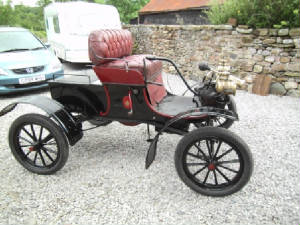
|
| Click the Picture to See Videos of the car |
And here are some videos on Youtube:
A great outcome,
and proof positive that if a man built it, a man can fix it (as long as he takes nothing for granted!!!)
|
